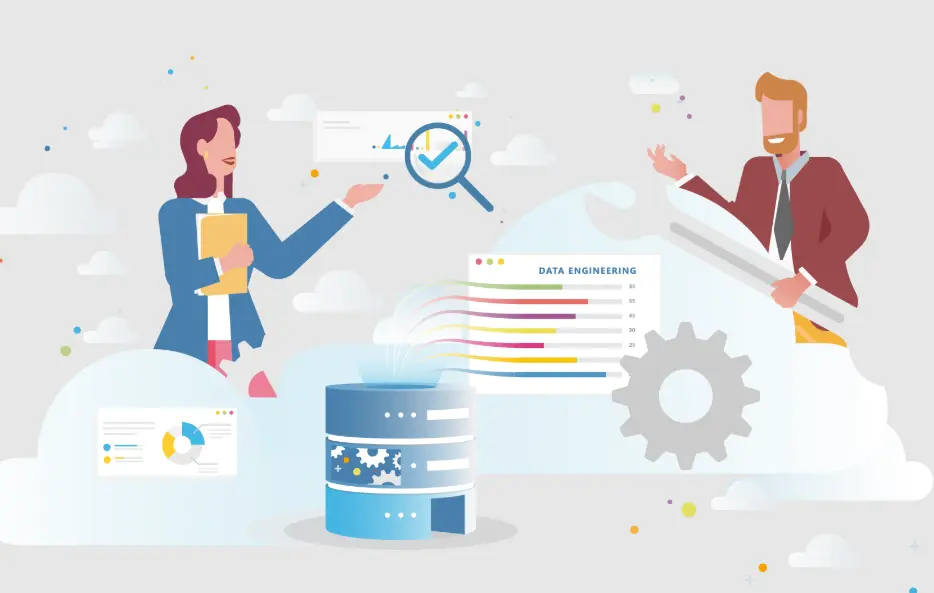The field of data science continues to evolve at an extraordinary pace, driven by the growing demand for actionable insights within businesses across industries. With this rapid expansion comes the increasing need for more streamlined and efficient workflows to handle massive amounts of data. Traditional manual methods for managing data science tasks are no longer sufficient to scale, as they are time-intensive, prone to human error, and often bottleneck innovation. Automation in data science has emerged as a game-changing solution, empowering organizations to achieve more with less and enabling data scientists to focus on creative problem-solving rather than administrative tasks.
By 2025, advancements in artificial intelligence (AI), machine learning (ML), and processing power are expected to push automated data science to new heights, transforming the way organizations handle data and extract value from it. From preprocessing and building models to deployment and monitoring, automation is revolutionizing every step of the data life cycle. Below, we explore the key benefits of automating data science processes and why this trend is set to dominate the realm of analytics in the near future.
What is Data Science Automation?
Data science automation refers to the use of tools and technologies to execute repetitive, time-consuming, and complex tasks within the data science workflow without requiring constant manual intervention. These tools leverage AI and ML to handle tasks like cleaning and preprocessing data, selecting features, building predictive models, and monitoring deployed systems. Automation tools such as AutoML (Automated Machine Learning) frameworks have become more accessible, making it easier for organizations, even those with limited technical expertise, to harness the power of data science.
The ultimate goal of data science automation is to accelerate processes while maintaining data integrity and analytical rigor. By eliminating redundant workloads, data science teams can focus on innovation, driving faster and more effective business insights.

Key Benefits of Automating Data Science Processes
1. Improved Efficiency and Speed
Automating data science significantly reduces the amount of time it takes to complete tasks throughout the data pipeline. Processes like data preparation, feature engineering, and hyperparameter tuning that used to take hours—or even days—can now be performed in a matter of minutes. Automation enables organizations to operate in real-time, addressing challenges and seizing opportunities with remarkable speed.
For example, tools like Google AutoML or DataRobot remove the bottlenecks associated with manual model building. These platforms allow businesses to reduce the time-to-market for predictive models, which is especially valuable in industries like finance or healthcare where timely decision-making is critical.
2. Enhanced Accuracy and Reduced Human Error
Human errors, such as incorrect data labeling or flawed model parameter selection, can significantly impact the performance of data science initiatives. Automation ensures that routine operations are carried out with precision, minimizing the likelihood of errors. Advanced platforms utilize algorithms capable of validating and cross-checking data to ensure consistency and accuracy.
Furthermore, automated systems can continuously learn and adapt over time by analyzing historical performance and outcomes. This iterative improvement helps organizations maintain high-quality models that produce reliable insights.
3. Scalability Across Large Datasets
The exponential growth of big data requires solutions that can scale effortlessly. Manual methods of managing data often fall short when faced with massive and complex datasets. Automation provides the scalability needed to process and analyze large volumes of data efficiently.
By automating repetitive tasks, organizations can allocate resources more effectively to handle increased workloads or additional projects. For instance, e-commerce companies operating at scale can use automation to personalize customer recommendations for millions of users simultaneously, fostering growth and customer satisfaction in equal measure.
4. Cost Savings Through Resource Optimization
Cost reduction is one of the most compelling reasons to adopt automation in data science. By streamlining the workflow and eliminating redundant manual tasks, businesses can reduce overhead expenses while improving productivity.
Consider the costs associated with hiring large teams of data scientists to manage repetitive tasks like dataset preprocessing or feature extraction. Automated platforms can perform these tasks at a fraction of the cost, freeing up skilled professionals to focus on high-priority, strategic initiatives that drive value.
5. Empowering Non-Technical Users
One of the most significant advantages of data science automation is its ability to empower individuals with limited technical expertise to become productive contributors. Modern automated tools come with user-friendly interfaces and guided workflows that allow business analysts, marketing teams, and other professionals to perform data-driven tasks without requiring specialized knowledge.
This democratization of data science ensures that insights are no longer confined to small technical teams. Instead, they can be leveraged across entire organizations, promoting a more collaborative and agile approach to solving challenges.
6. Shortened Deployment Timelines
Deploying machine learning models often requires extensive back-and-forth between data scientists and developers, leading to delays. Automated deployment pipelines streamline this process, enabling the rapid integration of models into production environments.
Additionally, automated monitoring tools ensure that deployed models perform optimally over time. If discrepancies or drifts in model performance are detected, the system can alert teams or even retrain models autonomously, ensuring that analytics remain actionable.
7. Facilitates Innovation Through Focused Efforts
Perhaps one of the greatest benefits of automation is that it frees data scientists from repetitive, mundane tasks. Instead of spending hours cleaning data or tuning model parameters, they can focus on exploring innovative solutions to pressing challenges.
With additional time, data experts can experiment with advanced machine learning techniques, integrate novel data sources, and work on creative approaches that set their organization apart from competitors. Innovation thrives when talented individuals are given the freedom to pursue meaningful work.
Challenges to Consider
While automation offers numerous benefits, it’s important to acknowledge potential challenges. For instance, reliance on automated tools may lead some organizations to overlook the importance of human oversight. Data scientists play a critical role in ensuring that models align with ethical standards and accurately represent the problem domain.
Additionally, the upfront investment in automation technologies may be a barrier for smaller organizations. However, as more tools become affordable and accessible, this challenge will likely diminish.
The Future of Data Science Automation
By 2025, we expect data science automation to become an integral component of every enterprise analytics strategy. Innovations in AI and ML will further enhance the capabilities of automation tools, making them even more versatile and efficient.
Emerging technologies like explainable AI will help bridge the gap between automated systems and human stakeholders by providing clear, interpretable results. Sustainability is also likely to become a focus, with organizations prioritizing energy-efficient methods to handle the growing computational demands of data science.
With the expansion of automation, new opportunities for collaboration, creativity, and productivity will emerge, reshaping the roles of data scientists, analysts, and researchers alike.
Challenges of Implementing Automation in Data Science
Despite its rapid advancements, the implementation of data science automation still presents notable challenges. Data privacy and security remain top concerns, as automated tools often require access to sensitive information. Ensuring compliance with evolving regulations, such as GDPR or CCPA, will require robust oversight and adaptation. Additionally, there is the challenge of building trust in automated systems, as some stakeholders may be hesitant to rely on machines for complex decision-making processes. Addressing these issues will be essential for widespread adoption.
The Role of Upskilling in Automation Adoption
The rise of automation in data science is redefining job roles and creating a pressing need for upskilling. Professionals will need to pivot from manual data processing tasks to higher-order activities, such as interpreting automated insights and refining algorithms. Organizations investing in continuous education programs to train their workforce will gain a competitive edge. This shift represents an opportunity for professionals to develop valuable new skills and enhance their roles in the industry.

Industry-Specific Applications of Automation
Different sectors are incorporating data science automation in innovative ways. Healthcare is leveraging automation to improve patient outcomes through predictive analytics and diagnostic tools. The financial industry uses automated systems to manage risk, detect fraud, and optimize investments. Similarly, retail companies are adopting automation to enhance customer experience and personalize marketing strategies. These diverse applications highlight the versatility and growing impact of automation across industries.
Ethical Considerations in Automation
As data science automation evolves, ethical considerations must remain a priority. Issues such as algorithmic bias, transparency, and accountability require careful attention to prevent unintended consequences. Developing fair and inclusive automated systems will involve collaboration between data scientists, policymakers, and ethicists. Furthermore, organizations must strive to create ethical frameworks and governance structures to ensure their automation practices align with societal values and norms.
Conclusion
Data science automation offers numerous benefits, including efficiency, accuracy, and innovation. While challenges remain, technology is rapidly evolving and becoming an essential tool for businesses to stay competitive in the modern landscape. By investing in upskilling and prioritizing ethical considerations, organizations can harness the full potential of automation and drive success in their data-driven initiatives. As we look toward the future, it’s clear that automation will continue to shape the field of data science and transform how we approach complex problems. Overall, it is an exciting time for the industry as we witness the power of automation revolutionizing traditional processes and opening new possibilities for collaboration and growth.
Frequently Asked Questions (FAQ)
1. What is data science automation?
Data science automation refers to the use of advanced tools and technologies to streamline and simplify various aspects of the data analysis process, including data collection, cleaning, modeling, and visualization. It reduces manual effort, increases efficiency, and allows data scientists to focus on higher-level problem-solving tasks.
2. What are the benefits of automating data science processes?
Automation in data science offers several benefits, including increased accuracy, time savings, scalability, and the ability to handle large volumes of data. It also enables businesses to make faster, data-driven decisions and foster innovation by automating repetitive tasks.
3. Are there ethical concerns surrounding data science automation?
Yes, ethical concerns such as data privacy, biases in automated models, and the potential displacement of jobs are significant considerations. To address these issues, organizations must implement robust ethical frameworks and promote transparency and fairness in their automated processes.
4. How can organizations prepare for increased automation in data science?
Organizations can prepare by upskilling their workforce, investing in training programs that focus on automation tools, and ensuring their teams understand both the technical and ethical aspects of automation. Establishing governance policies and fostering collaboration across departments can also contribute to successful implementation.
5. Will data science automation replace human data scientists?
Not entirely. While automation can handle many routine tasks, human expertise is still essential for developing strategies, interpreting results, and addressing complex or novel problems. Automation serves as a complement to human efforts, enhancing productivity rather than replacing human data scientists.


